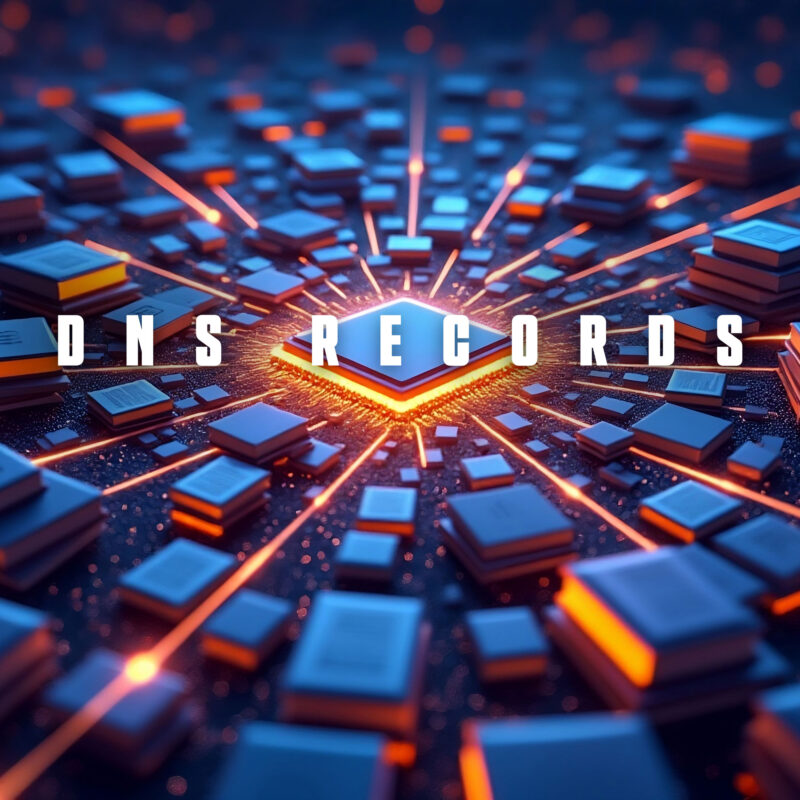
DNS, or the Domain Name System, is essentially the phonebook of the internet. It’s what turns those catchy, memorable domain names into the long strings of numbers that computers use to talk to each other. Think of it as the magic that transforms “example.com” into “192.0.2.1” – because who could remember all those numbers?
The Basics of DNS
What is DNS? At its core, DNS is like the internet’s GPS. You type in a web address, and DNS figures out where that site is actually located in the digital universe. It’s not just about finding websites; it’s about making the internet navigable for humans. Without DNS, we’d be lost in a sea of IP addresses, trying to remember if it’s “192.168.1.1” or “179.124.41.136” for our favorite cat video site.
Think about it: would you rather remember “easytoremember.com” or “2606:4700:4700::1111”? Exactly. DNS saves us from a world where every URL looks like a password you’d forget immediately. It’s the unsung hero of our daily internet adventures, making the web accessible, memorable, and just a bit more magical.
Types of DNS Records
- A Record: This is the basic mapping of your domain name to an IPv4 address. Think of it as your website’s home address on the internet.
- AAAA Record: For those embracing the future, AAAA records do the same as A records but for IPv6 addresses, which are longer and look like they’re from a sci-fi movie.
- CNAME: Acts like an alias for your domain. If you want blog.example.com to point to example.com/blog, CNAME is your tool. Just remember, it’s not for the main domain.
- MX: Essential for email, MX records tell the world where to send your emails. Without them, your digital mail would be lost in cyberspace.
- TXT: Originally for text, now used for various security and verification purposes like SPF and DKIM for email authentication.
- NS: These records delegate authority for your domain to specific name servers, essentially saying, “These guys are in charge here.”
- SRV: Less common but important for services like VoIP, SRV records specify which server to use for a particular service.
How DNS Records Work
- The DNS Query Process:
- Browser Request: You type a URL, your browser asks your local DNS resolver for the IP.
- Recursive Query: If the resolver doesn’t know, it starts asking root servers, then TLD servers, and finally the authoritative servers for the domain.
- Answer: The resolver gets the IP and sends it back to your web browser.
- Connection: Your browser uses this IP to connect to the web server.
- Propagation:
- When you update a DNS record, it doesn’t change everywhere instantly. DNS servers cache information, and this cache has a TTL (Time To Live). Changes can take from minutes to 48 hours to propagate globally, depending on the TTL set. Patience is key when making DNS changes.
Real-World Applications
Load Balancing: Imagine you’re hosting a massive party, but your house can only fit so many guests at once. DNS load balancing is like setting up multiple party venues across town. When someone types in your domain, DNS decides which venue (server) they’ll visit based on availability and load. It’s like having a bouncer who’s also a traffic cop, ensuring no server gets overwhelmed, and everyone gets to the party.
Geo-Targeting: Ever wonder why you see ads for local pizza when you’re in New York but not when you’re in Tokyo? That’s geo-targeting at play, often facilitated by DNS. It’s like having a global concierge service that knows where you are and gives you the local version of your site. DNS can route requests to servers based on the user’s location, serving up content tailored to where they’re standing on the planet.
Security: DNS isn’t just about finding websites; it’s also your first line of defense. Think of DNSSEC (DNS Security Extensions) as the bodyguard for your DNS records. It ensures that the DNS data you receive hasn’t been tampered with, like making sure your party invitations haven’t been forged by party crashers. DNSSEC adds an extra layer of trust, ensuring the internet’s phonebook isn’t just a list of numbers but a secure directory.
The Future of DNS
DNS over HTTPS (DoH) and DNS over TLS (DoT): The internet’s been getting more private, and DNS is no exception. DoH and DoT are like giving your DNS queries a cloak of invisibility. They encrypt your DNS traffic, ensuring that your browsing habits are as private as your secret stash of vintage CSS books. It’s like sending your DNS requests in a secure, encrypted envelope, making sure no one can peek at what you’re up to online.
Decentralized DNS: Decentralized DNS systems like Handshake and ENS (Ethereum Name Service) are like the internet’s version of a blockchain party. They aim to remove the central authority from DNS, making it more democratic. Imagine a world where you can own your domain name on the blockchain, free from the whims of traditional registrars.
Ready to take your DNS game to the next level? Start by auditing your DNS settings. Online DNS tools and services can be your new best friends. Remember, a well-tuned DNS setup not only ensures your site is accessible but also fortifies your digital footprint. So, go on, explore, tweak, and maybe even experiment with some of those advanced features we’ve covered. You’ll be much happier with your site’s performance and security, and your users will enjoy a smoother, safer online experience.
